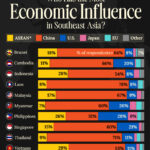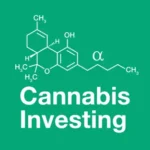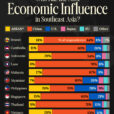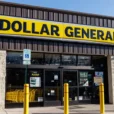
Yellen’s dovish comments may be fueling a market rally at the end of one of the most volatile quarters in years, but these haven’t buried low volatility ETFs. The new-found optimism on Yellen’s hint of a ‘cautious’ rate hike trail perked up investors sentiments lately, helping U.S. bourses to score gains for two back-to-back days (as of March 30, 2016) (read: ETF Winners & Losers Following Yellen Comments).
With this, the broader market pared some of the prior losses. Among the top ETFs, investors have now seen SPY gain about 1.1%, DIA gain about 1.7% but QQQ move down by about 2.2% year to date (as of March 30, 2016). However, the recent gains do not ensure that the market is free from risks.
The Fed chair repeatedly pointed to global growth concerns and deflationary fears as downside risks to the interest rate policy. With the oil refusing to stabilize, ‘more oil producers facing delisting’ and growth issues still present abroad, a bear market and the consequent volatility may come down the pike anytime.
Also, the U.S. earnings picture is still in shambles. Earnings estimates for the first quarter of 2016 are projected to decline 1.4%. Ruling out the impact from the energy sector, the picture looks slightly better at 1.3% decline.
Even investors seem to have little faith in the Yellen rally as they are following low-volatility ETFs despite the enthusiasm in the market. The tendency can be validated by the all-time highs hit by the below-mentioned low-volatility ETFs on March 30.
U.S. stocks may not be expensive, but they are not cheap either at the current level. There is also widespread fear among investors about how long this rally will hold.
In such volatile times, it’s prudent for investors to follow a proper trading strategy which ensures risk-on sentiments along with stability. With that in mind, we highlight four low volatility ETFs, each of which hit all-time highs lately and could be in focus in the days to come (read: 5 ETF Ways to Keep Volatility at Bay).
PowerShares S&P 500 ex-Rate Sensitive Low Volatility Portfolio (XRLV)
XRLV looks at 100 S&P 500 components that exhibit both low volatility and low interest rate risk. This strategy excludes stocks that perform miserably in a rising rate environment, with a tilt toward financials (23.31%), industrials (23.06%), health care (19.23%) and consumer staples (14.52%). The $126.2-million fund charges just 25 basis points a year in fees. However, the product is not a great choice for dividend yield. The fund yields about 1.46% annually and added 1.2% in the last five trading days (as of March 30, 2016).
S&P 500 Low Volatility Portfolio (SPLV)
This $6.62-billion low volatility ETF consists of the 100 stocks from the S&P 500 Index with the lowest realized volatility over the last one year. The fund is heavy on consumer staples (22.6%), financials (21.4%), industrials (16.2%), utilities (14.1%) and health care (13.5%). The fund charges 25 bps in fees. SPLV advanced over 1.4% in the last five trading days (as of March 30, 2016) and yields about 2.16% annually. It has a Zacks ETF Rank #2 (Buy) with a Medium risk outlook.
iShares MSCI USA Minimum Volatility (USMV)
The fund measures the performance of equity securities in the top 85% by market capitalization of U.S. equities that have lower absolute volatility. The fund has garnered an asset base of $11.2 billion. This fund is home to 168 securities in total and assigns double-digit allocation to the financials (20.49%), health care (19.22%), information technology (15.23%) and consumer staples (14.94%) sectors.
The fund also has an edge over its peers when it comes to expenses as it charges a fee of just 15 basis points annually while it yields about 2.02%. The fund delivered a return of about 1.5% in the last five trading days (as of March 30, 2016). The fund has a Zacks ETF Rank #2 with a Medium risk outlook (read: How to Play the Choppy Market with Cheap Smart Beta ETFs).
S&P MidCap Low Volatility Portfolio (XMLV)
This overlooked ETF looks to follow the S&P MidCap 400 Low Volatility Index. The product invests about $316.5 million in assets in 78 stocks. From a sector look, financials takes half of the portfolio followed by about 11.84% of assets invested in materials, 11.59% in industrials and 10.67% in utilities. The portfolio has minimal company-specific concentration risk with no product accounting for more than 1.69%. The product charges about 25 bps in fees. It was up 1.8% in the last five trading days (as of March 30, 2016).















